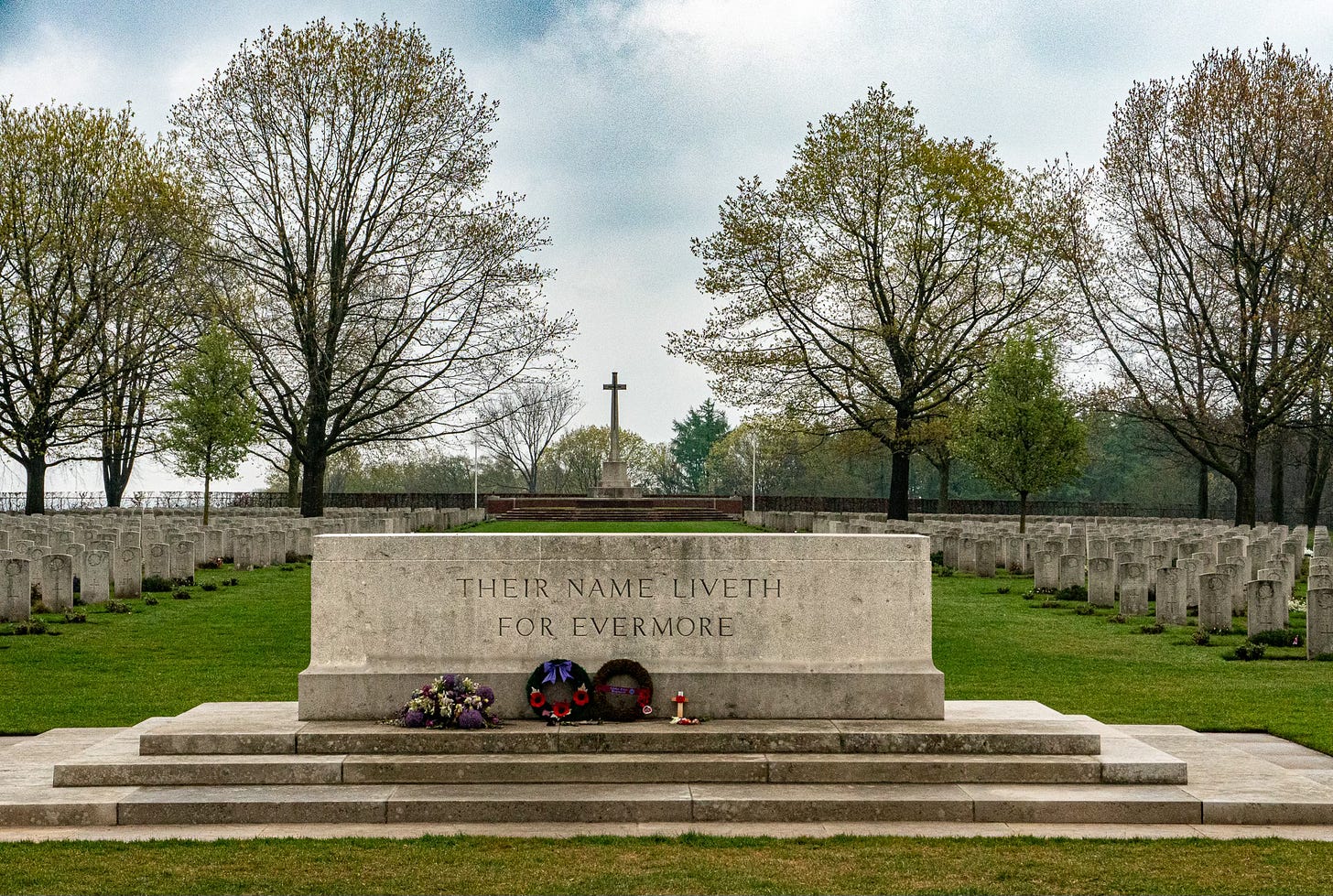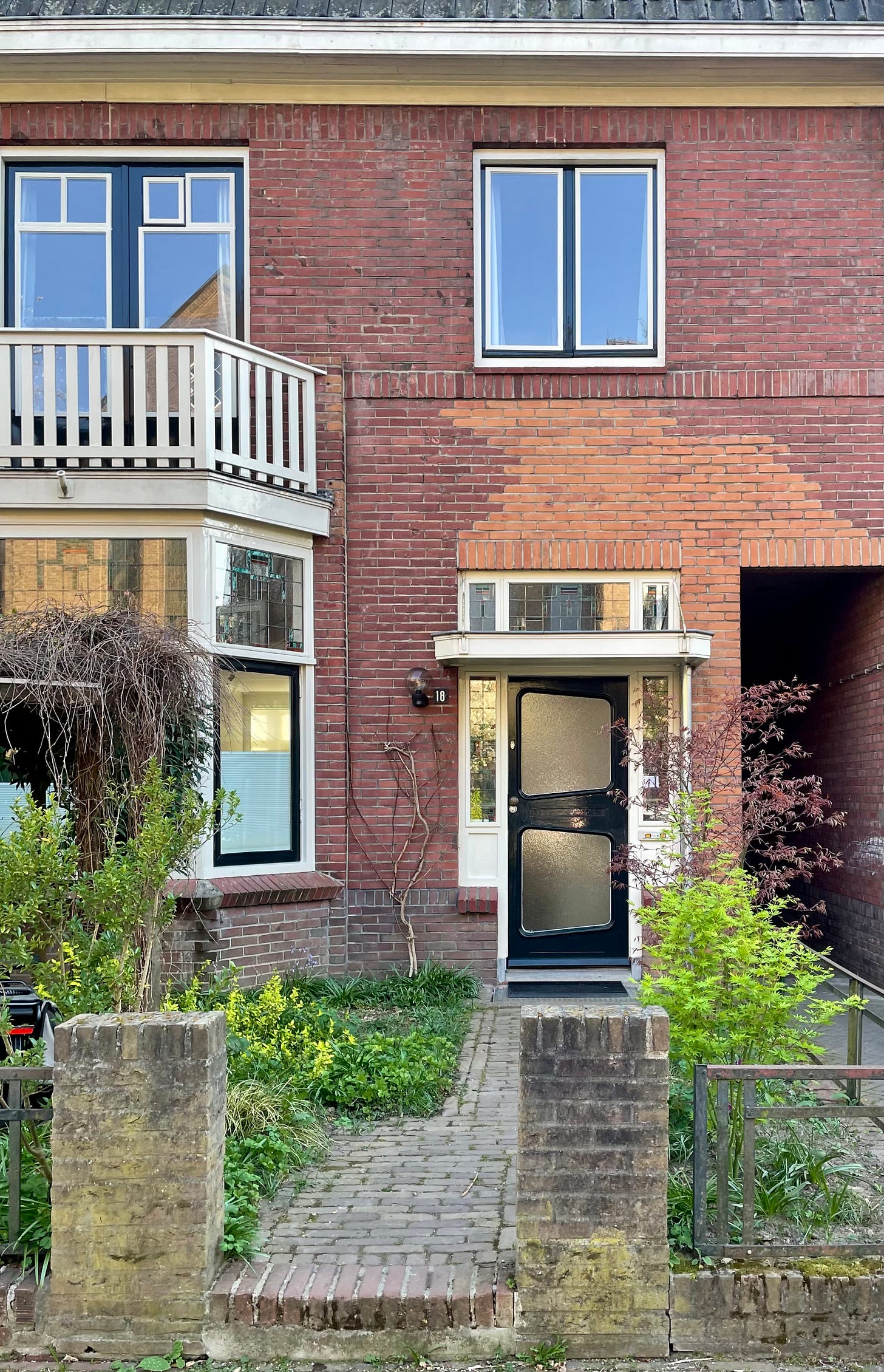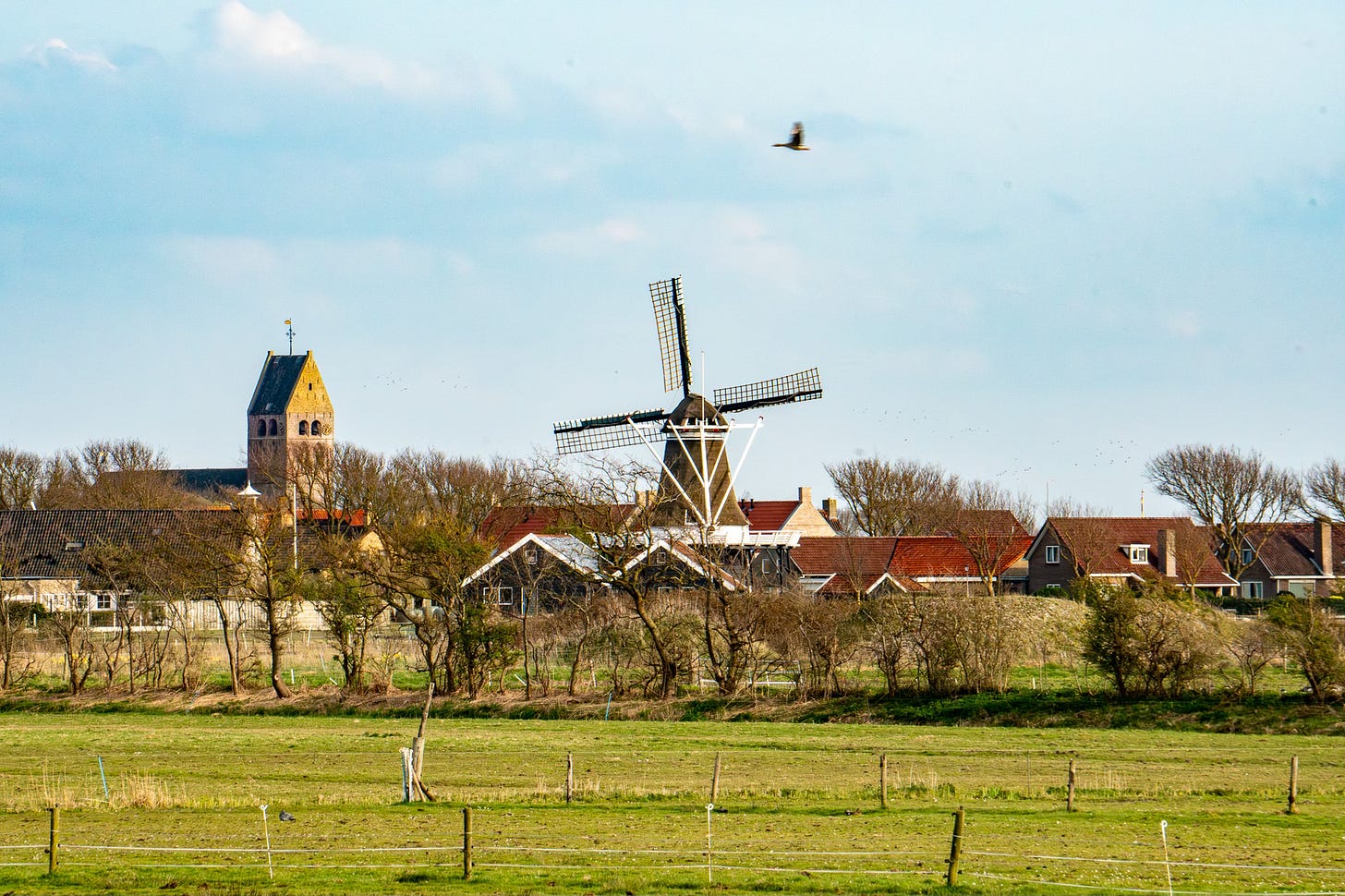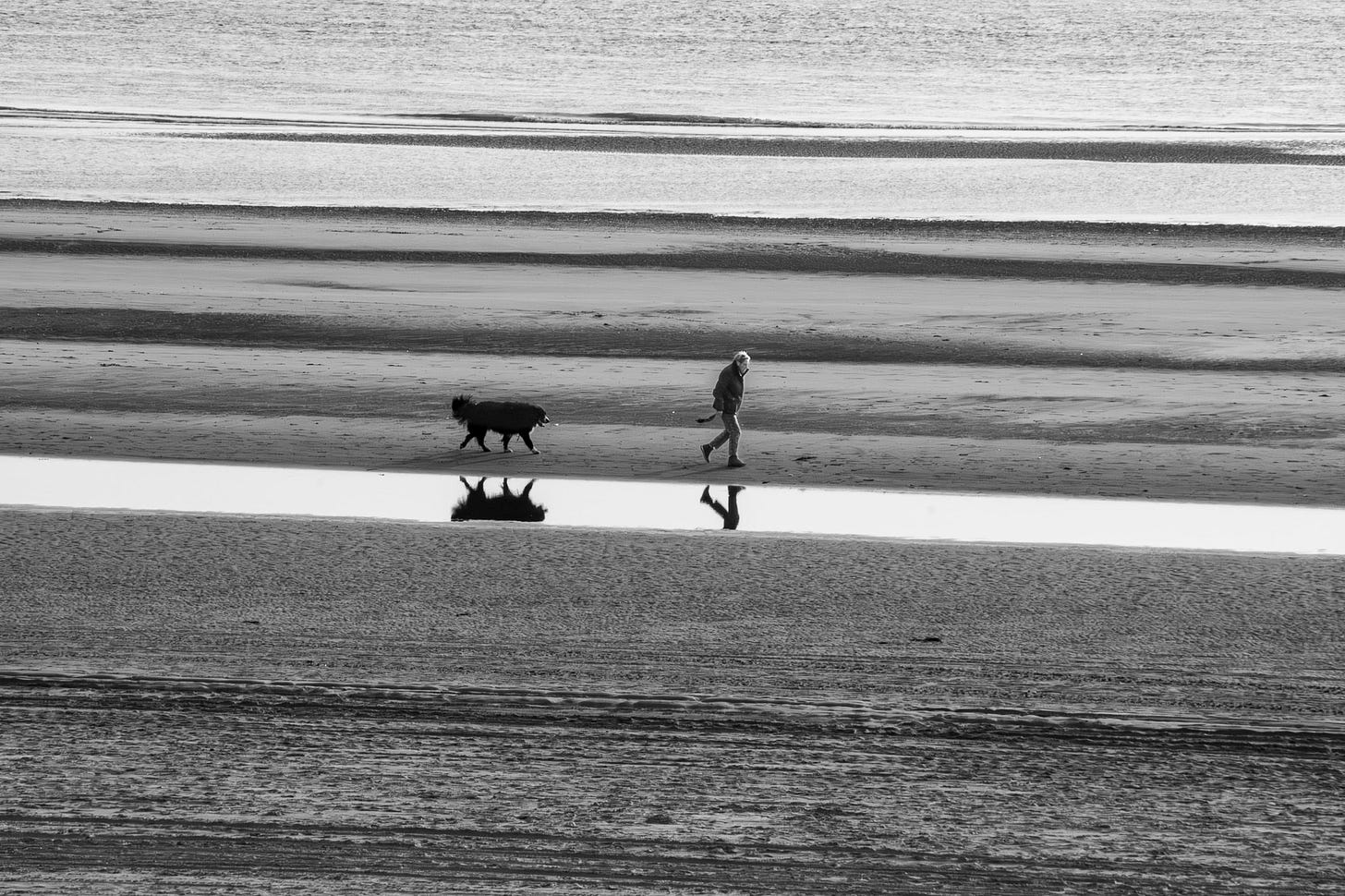Neighbours
War and memory in the Netherlands
Groesbeek Cemetery lies in east-central Netherlands, roughly four kilometres from the German border. Most of the 2610 men buried here were Canadians and most of them died during the Battle of the Rhineland in February and March 1945. They were almost all young. The ages on the gravestones are 21, 22, 23, and so on, with the occasional 19 or 32.
As it happens, this is the 80th anniversary of the liberation of the Netherlands. Each day through this winter and spring, there are individual liberation days to remember in one village or another. Not the phoney “liberation day” Canadians have recently heard about from south of their border.

It is achingly sad to contemplate the number of graves at Groesbeek multiplied by the many decades of life lost, not to mention the many children and grandchildren who never were.
The men buried there may have signed up from any number of motives: social expectations, Canadian or imperial patriotism, anti-fascism or simply a thirst for adventure. But they did a very big thing.
Some of Alex Colville’s most famous paintings from the war, including Infantry, Near Nijmegen, Holland, depicted the exploits of Canadian soldiers in this region of the Netherlands.
Groesbeek is a few kilometres outside Nijmegen, where our hosts on this trip live. The first afternoon here, we were taken on a drive along the dikes but ended up crossing into Germany where we sat on a garden terrace. We had cappuccinos and I indulged in a slice of Schwarzwäldertorte (Black Forest Cake) in the early spring sunshine. There is no geographical feature—no river or hill—to mark the border and no customs booth either, both countries now being members of the EU.
The border is more lightly etched than that between Canada and the United States. You cross an unremarkable street and the architecture is a little different and the language changes from Dutch to German.
Our hosts live in a row of houses in Nijmegen across from a former monastery. On one of the houses you can see a difference in the coloration of the bricks: a repair after a German shell tore into it as the occupying army was pushed out of the country in 1945.
One of our hosts, Brigitte Weusten, has written a book about the monastery across the way, where many of the residents of this street took refuge from the bombardment in the latter stages of the war.

We were told that the Dutch usually refer to “the occupation” rather than “the war” because the fighting here lasted only a few days at the beginning and a few months at the end but there was great suffering in between. Brigitte’s husband, Steven Bakker, is Jewish on his mother’s side. His mother and grandmother spent years moving from one hiding place to another avoiding the Nazis during the occupation. They were among the lucky ones. 107,000 Jews were deported to the extermination camps from the Netherlands and “More than 75% of Dutch Jews perished in the Holocaust”.
Steven’s mother and grandmother preferred not to talk much about the war years and so, sadly, he has very little information about the heroes who protected them. Amazingly, when he and Brigitte stopped to look at a little church one day, they found a pamphlet that named an uncle of his as one of the Jews that parishioners had harboured during the war. That chance discovery led them to find Mattie Dijkstra-Schaap, now in her 90s, a daughter in the family that had protected him, and they remain in touch with her.
Brigitte has another book coming out in a few months, based on the documents left behind by a number of Jews, including some of Steven’s relatives, from their travails during the occupation. Some survived; many others did not.
The thickness of these memories is not unique to our hosts. As we toured the town of Nijmegen, we came across a series of shop window displays describing the famous “Operation Market Garden”, during which Nijmegen was liberated. Ironically, much of the city’s core had been destroyed months earlier by Allied bombing.
After a couple of days around Nijmegen we drove to our hosts’ country home on the island of Ameland on the Netherlands’ North Sea coast. It is a beautiful little island and a mecca for vacationers.
As it happens, our visit to the island coincided with a German school holiday, so German was heard almost as frequently as Dutch on the bike trails and in the cafes. A group of Germans were looking at concrete bunkers protruding from some dunes and Brigitte explained to them that they had been erected by the occupying German army during the war.
Nearby there is a tall lighthouse whose lenses were destroyed by Dutch partisans to prevent the invaders from guiding their shipping by its beacon.
In the village of Hollum on the island there is a little museum dedicated to the local sea rescue operation, which is manned by local volunteers. In one corner of the museum, there was an exhibit about the war. It included a children’s game a little like snakes and ladders in which a patriotic action would allow you to advance while collaboration would force you to slip behind.
While I was looking at that, I heard a gasp from my sister, Marie. In an exhibition case, there was a copy of our hometown newspaper, the Winnipeg Free Press, from May 2, 1945, just three days before the Netherlands’ official national Liberation Day.
On our last day on Ameland, Brigitte got a phone call during dinner. It was Mattie Dijkstra-Schaap, the woman whose family had housed Steven’s uncle when she was a little girl. She had just watched a documentary on television about the liberation of the northeast of the Netherlands where she lives. So we sat down and watched it. We couldn’t understand the Dutch of course, but the footage of Canadian tanks, cheering crowds, and old folks struggling with tears spoke for itself.










After reading this thoughtful post a story with similar themes jumped out at me in this morning’s Globe and Mail. https://www.theglobeandmail.com/world/article-a-dutch-city-celebrates-80-years-of-freedom-and-the-one-eyed-canadian/
Great article, Paul - thank you.